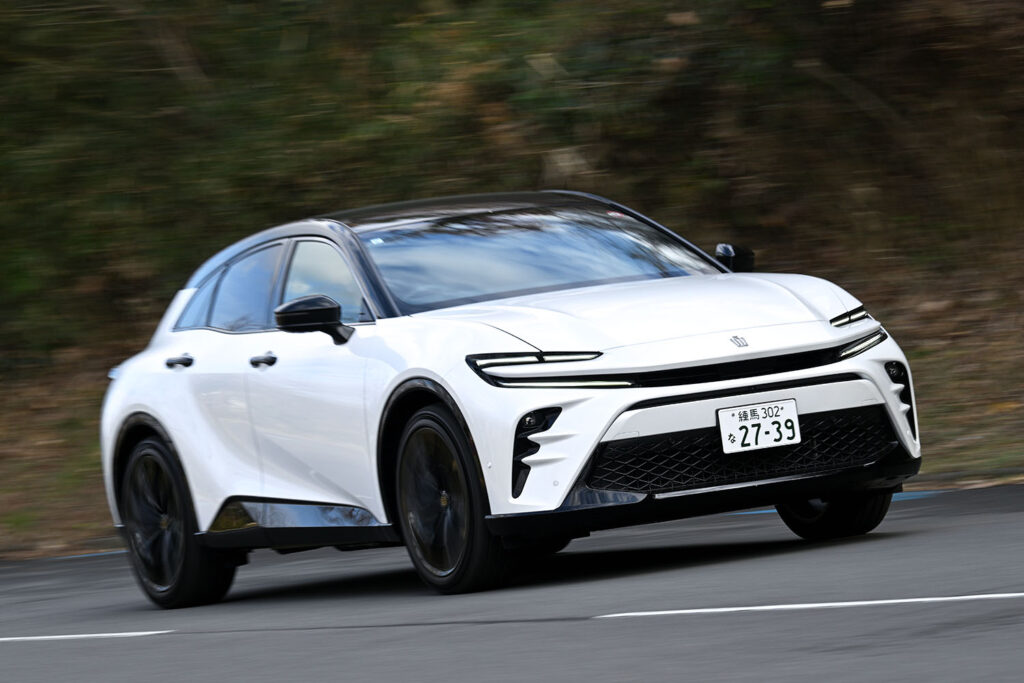A model with a comfortable ride and enhanced agility
The Crown Sport is the second model in Toyota’s new Crown series, which began with the Crown Crossover. It is available in two models: the plug-in hybrid ‘Sport RS’ and the hybrid ‘Sport Z’. We have test-driven the Sport Z to see how it performs.
The SUV that will be the best-selling in the series
The new Crown series started with the Crossover. The second in the series is the Crown Sport SUV. The ‘Sedan’ has already been launched, and the fourth model, the ‘Estate’, has been announced for launch in 2024 or later.
The ‘Sport’ model range, which will probably be the best-selling of the Crown series, consists of the hybrid ‘Sport Z’ and the plug-in hybrid ‘Sport RS’. Our test drive this time was the former, the Sport Z. The basic framework is based on the GA-K platform, which can be regarded as Toyota’s mainstay. Starting with the Camry, the RAV4, Harrier, Lexus NX, Lexus RX and three models in the Crown series (excluding sedans) use this platform.
Although they share a common platform, the Sport has a body size of 4720 mm (length) x 1880 mm (width) x 1565 mm (height) and a wheelbase of 2770 mm, while the Crossover is 4930 mm (length) x 1840 mm (width) x 1540 mm (height) and has a wheelbase of 2850 mm, The wheelbase is 80 mm longer on the Sport than on the Crossover. The wheelbase is 80 mm shorter in the Sport.
The exterior design is said to resemble the Ferrari Purosangue, so Toyota may have done it right. The rear area is also honestly cool, with intricate wings and other features. The interior is simple in design, with an asymmetrical colour scheme for the driver and front passenger if the sand brown interior colour of this test car is selected. The seats are sporty leather seats. The rear seat space is not oppressive despite the shortened wheelbase, and even an adult of approximately 180 cm in height can comfortably occupy the space.
If you want more power, get a PHEV
The powertrain is the same as that of the Crossover, a hybrid based on a 2.5-litre straight-four engine that delivers a maximum output of 186 hp and a maximum torque of 221 Nm, with a maximum system output of 234 hp, an electric continuously variable transmission and 4WD drive system. (WLTC mode).
The driving performance is differentiated from crossovers by a short wheelbase and wide tread to increase agility. DRS (rear-wheel steering) is also standard, and is controlled to be in reverse phase at low speeds and in phase at medium to high speeds, enhancing turning ability and stability. The suspension type was MacPherson struts at the front and a multi-link type at the rear, with 21-inch Michelin primacy feet.
The variable dampers are said to be available only on the PHEV, but the ride was good with firm 21-inch tyres. If anything, we would have liked more power from this chassis. If that’s the case, I guess I’d go for the PHEV.
translated by DeepL
